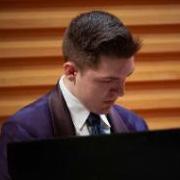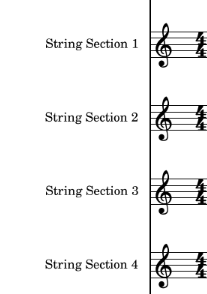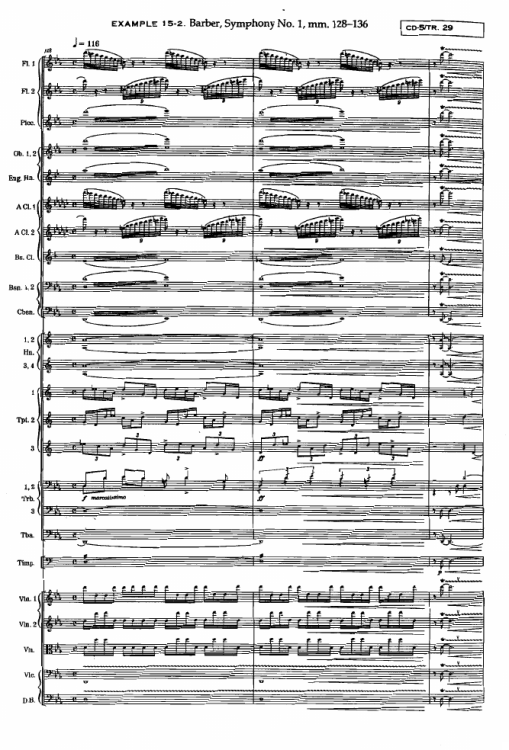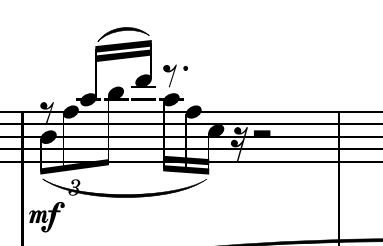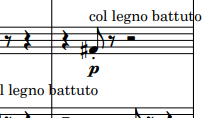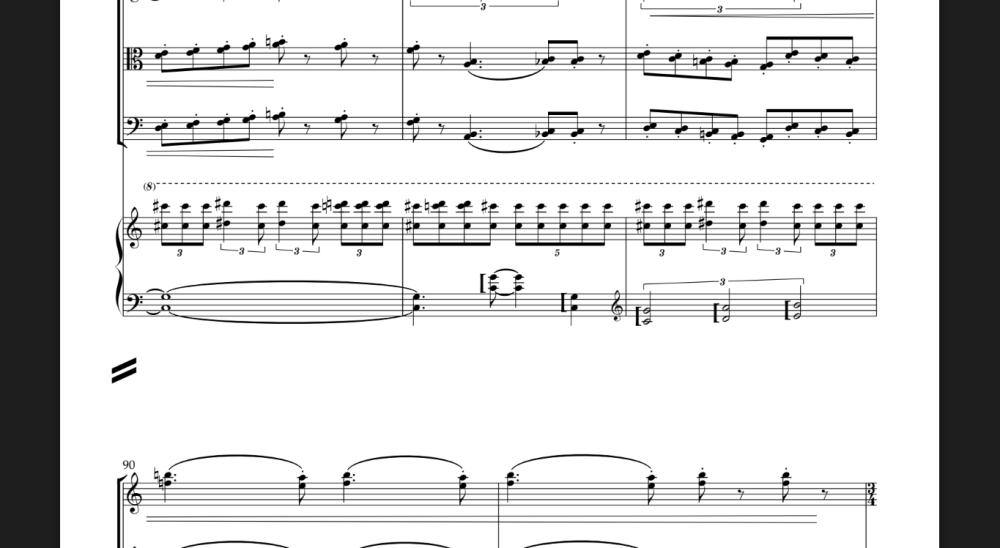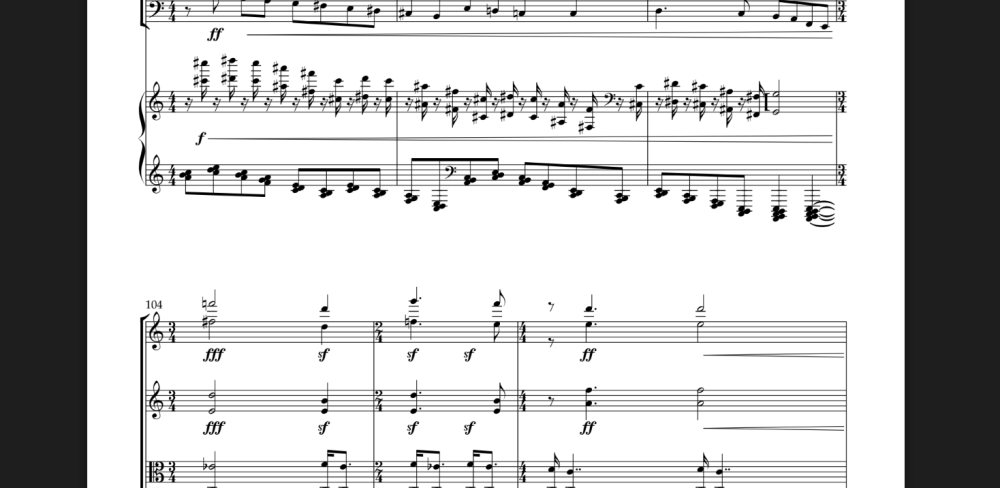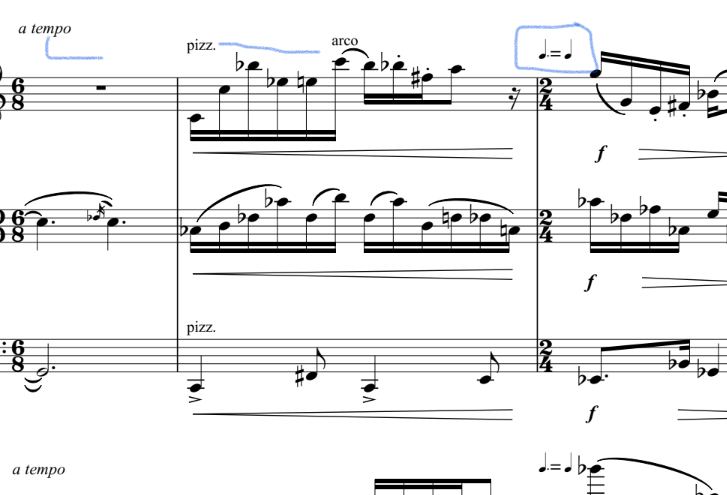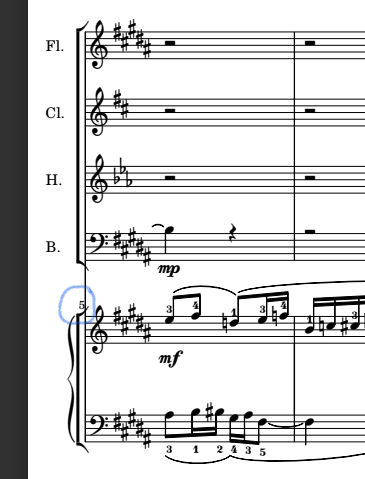-
Posts
558 -
Joined
-
Last visited
-
Days Won
28
Omicronrg9 last won the day on November 4
Omicronrg9 had the most liked content!
About Omicronrg9

- Birthday 03/03/2000
Contact Methods
-
Skype
omicronrg9
-
Website URL
https://www.free-scores.com/Download-PDF-Sheet-Music-omicronrg9.htm
Profile Information
-
Biography
Average, amateur composer. Accordionist, casual pianist. Hopefully physicist in a year or so. I also play Pixel Dungeon, and collect stats of my own bike trips.
-
Gender
Male
-
Location
Spain
-
Occupation
Student, I do things but no one pays me.
-
Interests
I don't have hobbies. Either that or everything I do are hobbies.
-
Favorite Composers
Lately Czerny not gonna lie.
-
My Compositional Styles
I don't really know, but it's definitely not mainstream.
-
Notation Software/Sequencers
Musescore 1, 2, 3 and nightly builds of 4. I have also used sibelius, finale, guitar pro 5 & 6, FL Studio, reaper, Cubase Pro (10.5) and some other DAWs, but I mainly use musescore.
-
Instruments Played
Accordion, Melodica, Piano, some percussion instruments & I played a small organ once.
Recent Profile Visitors
3,765 profile views
Omicronrg9's Achievements
-

Should I start with traditional tonality?
Omicronrg9 replied to mahler2009's topic in Composers' Headquarters
Welcome to the forums, Mahler2009! I agree with my colleagues here dude. Get more into tonal harmony + whatever piques your interest. Keep composing, this is a discipline that's best learnt by practice, trial an error. Getting your own voice may be difficult but if you are resilient, disciplined and constant, you'll achieve it. Your first works may or may not hint you where you want to go. Be curious, experiment, come back, go forward. Feel free to share them with us, we won't go hard (not much, I hope 🥶) ! Best regards, Daniel–Ø. -
Hi my dear readers, it's me again. I don't understand many things here, but first things first. Imagine that I say this piece is evidently made by AI. It would be very easy to prove me wrong, @Vonias. Instead of submitting .mid files, a better, more detailed description of the process you followed would have clarified all posters here of what you did and what you have not done with it. Personally I don't care a single bit about that but we'll get to that point later. Please, consider that you are in a place filled by trained & experienced musicians and some of us have passed hundreds of hours listening to pieces just to give feedback out of either a brief or a more in-depth analysis. For some, not specifying that you were helped by an AI to make a better recording of your work and ambiguously describe it or talk about it with phrases like: may very well lead to confusion and even anger among others who consciously decided against using this tools in order to participate in an event in which ultimately your compositional ability is what we want people to show off, review and comment. Various AI tools exist to "help" with that recognition, but they are still in beta (mostly) and their own creators advise against using them as reliable methods. I took the liberty to pass the audio to some, despite you confirmed that the recording is AI: It basically says "Pure AI" 90% and provides a model. Tell me —if you want— if it hit it, this will make this developer's work better. But the thing is that you say everything else is not AI-generated. And this is where we get into trouble here. There are two different pieces here. A pdf submitted along the creation of the post that has little to do with the final mp3 you provided and the score that apparently resembles the mp3, according to you, 1:1? What's exactly the relation between the first and second scores? I can see some, let's say "adventurous" chords in the first score but not that many in the second. First score is half the size, begins with a different voicing. Rhythms don't really coincide, lyrics rest at different places "angel____ vs. an-gel cries___" . Midis are all over the place but you can clearly see the difference. Just pointed out some. What @AngelCityOutlaw is pointing out is mostly in the right direction but: That would not work. You need a seed too. If you do that yourself twice with the same material (and without fixing the seed) you'll get different things if you don't specify the same seed to the model, whatever it be. It happens with music, but also with LLMs and Image & video generators. And there are various tools to treat, import and export midis. Generating high-quality products using it is a whole 'nother story yes, but we ain't talking about one here, this is a <1 minute composition. Finally let me tell you that I don't mind if you just made the whole thing via AI, a part, or whatever. I would prefer you and anybody else in that situation to be honest and clarify things from the beginning to the rest of us who most likely are prone to and will have a listen to your piece, perhaps even giving some also honest feedback in exchange. Regarding that, the audio doesn't seem quite fitting. The strange autotune sound that the AI apparently gives to the singers sometimes and the strange cuts in vibrato feel off. The piece lacks development but it's a short "poem" more or less, right? For more info on this topic of using AI to make/export/import music on many formats, an AI that I have enslaved using a rectangular plastic card that spits money, may show you the way. Or maybe not, who knows: https://www.perplexity.ai/search/can-suno-or-similar-programs-e-2dN_8OipSNCC93.FtFGJoA?sm=d#0 Perhaps I'm late to the party, but these are my two cents. Sorry for my possible typos in advance... I am too sleepy. Regards!
-

Concerto in C for Flute and Orchestra
Omicronrg9 replied to J. Lee Graham's topic in Orchestral and Large Ensemble
Nah, this is GREAT. Thank you, it's so great to come back to this forum and stumble upon such a magnificent work. I agree with Peter in that you should leave the flutes as they are. This live would probably be great! I am not really a fan of concertos. For some reason they don't really stick to me, it just must be that I have not listened to them enough and with enough attention. But here, listening to this, I feel right at home. What a delightful first movement! It was light, gentle, sweet and very enjoyable in summary, although it was not bland or boring, I loved the tenser moments with lots of timpani and the passage right after the introduction. You clearly know your craft and I think that shows in the equilibrium between the orchestra and the soloist! The andante was also lovable. It did even gain a bit of sweetness but it didn't become overwhelming, pompous... No, again I find equilibrium, and I cannot really stop the piece so here I come again. Some resolutions of certain passages remind me a lot of the second movement of Haydn's Trio No. 39, and probably of lots of other pieces written by him but this one came to mind. Third movement was a tiny tiny bit darker or more serious, those minor passages preceded by the striking brass+timpani tuttis (or tuttis overall, didn't see the score at that point) were something I 200% enjoyed. And the last fanfares and finally, the coda... Damn. Impressive, hats off. I feel almost like if I had attended to a premiere of some great musical work (and at my place that's not very common, it's either ultrahyperdissonant or conceptual stuff or already established music by our grand masters of the past). What a great job, many many thanks and congratulations. I have already shared it with my friends. Hi man. Since the OP did not reply yet let me just throw two very well known references that you may know as well, but just in case: ♫ The study of Orchestration by Samuel Adler ♫ Principles of Orchestration by Nikolai Rimsky-Kosarkov In the rare case you haven't heard of them, here you go. Best regards, Daniel–Ø. -
Omicronrg9 started following J. Lee Graham
-
Nice improv! Are you the saxophonist? Or did you use AI or something like that? Too much cymbal, and it seems a bit odd at times for me, not sure why, but all in all, great! Kind regards, Daniel–Ø.
-

Apatite - Short Orchestral/Vocal Sketch (score + audio)
Omicronrg9 replied to Burlap Guy's topic in Choral, Vocal
Hi Burlaw Guy and welcome to the forums! Nice atmosphere you created. Quite simple but it mostly works, soundwise. You don't get into complication, and thus little trouble comes. However, I am not sure of how you recorded this but it's clearly wrong (compared with what the score reads) at many places. It's specially noticeable in the off-rhythm passages that should not be off, and the last section in which you have a piano solo that is everything but equal 8ths! Score-wise and in regards of other aesthetic and musical aspects I believe @TristanTheTristan and @Thatguy v2.0 have given you some advice that is worth checking in my humble opinion. My best advice, if you want to make scores and compose your works yourself for Orchestra, is to first learn how to make them readable, useful for real orchestras or any size, and overall learn about the disposition of these instruments, their characteristics, etc. You won't get to idiomatic writing in the blink of an eye, but you will spot strange stuff in your own scores and maybe in others'! For that purpose I must recommend you a book by Samuel Adler called: "The Study of Orchestration". Examples of strange scoring (for a real orchestra) are: What strings? Violins, violas...? All of them? 4 scores for all strings? This is ambiguous and apart from that you got violas on a separate staff! The order in which you present the instruments in a general score also matters. More to some than to some others but a standard order is always advised. And just to put some more examples of GOOD writing practices for orchestra and details found on a bit more in-depth analysis of the score: • You present female voice and choir parts, but then they turn to Vo. and W. What happened? • The horn can be transposed to F and Bb, normally it's on F as it's the case in your score but knowing things like these and specifying them never hurts! • Specify the type (and if you want, the number) of instrument playin' in every part. "String section" says very little. "String section" with block chords, says a bit more, but not about the piece, but about the approach used to reach it. Normally, you have 2 violin sections, 1 viola section, 1 cello section and 1 double bass section. Get acquainted with the terms divisi and unison, again not 100% needed but an accumulation of good use of conventions and fine details makes a score shine. I know the image I sent you is pixelated but all things I'm saying are in part there. Really, reading a treatise of orchestration such as the one I suggested will greatly help you in this regard! Finally: it is a bit strange that you have almost no brass but the horn. The score overall needs some polishing but it can be read. Beware of overlaps. A bit all over the place for a review, I know, but I just intend to not repeat what my colleagues here said and to give you some more stuff to work on. Hope any of this was of help. Best regards, Daniel–Ømicrón. -
Aaah, understood. To be honest, I had never thought much of differences between modern film composers ways of developing motives and themes and the ways of the grand masters of the past. See you around in the forums 😁
- 18 replies
-
- 1
-

-
Damn man, thanks. I am deeply honored. Thank you (and Peter!) for keeping this forum alive all this years. May we forever see it sprouting posts with new compositions. Now I can see the text thanks to quotting + using Text colour = Automatic! Before... 🥶 I like the "happy-go-lucky but creepy quality much like the way clowns are happy but creepy to many people", did not think about clowns. Actually I have never been into a circus or never assisted any celebrations in which a clown was performing 😰. It's neat to see that the music made you make that connection without extra input. What do you mean by cinematic repetition of themes? Just curious Thank you both for sharing your impressions guys :). Damn, what a contrast between your impression and Peter's! I agree that it's not very spooky, in fact I think I have like 20 pieces way more sinister than this thing. But elves? Gold dust? Wild! I am grateful, not everyday I can read other people's perception of this or any other piece of mine, my public is very limited 😁. Good luck in the polls and once again, many thanks, Mr. Handke!
- 18 replies
-
- 2
-

-

-

American Cryptids - Fall 2025 Halloween Submission
Omicronrg9 replied to Micah's topic in Chamber Music
Hi! Drive links are fine, but you can also just drag your files here and they will be automatically shown. Welcome to the forums! In fact it seems like a work with five movements according to the PDF itself, but the OP submitted 3 here. Multi-movement works are fine, it's a shame you had to split it up. Do not hesitate on publishing the rest anyways! On the engraving plane, I would recommended you to mark the beginning of each movement with its subtitle. Just a detail, but a neat one if you ask me! There are some overlaps here and there but overall the score seems idiomatic for strings. Other users, better acquainted with these instruments may disagree or agree, but I see that you let them "breathe" (except at some spots, e.g: M19-25 on the Scherzando, Violin I, but still probably not too difficult to get) and that you have not written anything incredibly difficult. Articulations are detailed, harmonics are marked, there's a good use of dynamics... First movement starts off decently, but what I liked the most was the groove that it takes sometimes. Wish it had lasted more! This movement alone could have been enough as an entry for the competition, and I find it more or less appealing after a few listens! The second movement also has this groovy feeling that appears and disappears. It takes a bit of time to actually get started and make full use of that swing! This also happened to a degree in the prior movement, you seemed to intentionally try to make the piece not too rooted in that catchy rhythmic pattern. Not sure if it was the best choice or if the way to avoid it was optimal. The third one was the most tense and there were some really GOOD moments in there, but I can't get off the impression that you added unnecessary passages to increase that tension. It may be just me, though. All in all, a great submission. Many thanks for showing it here 🙂 and good luck in the polls! Best regards, Daniel–Ø. -
Cosmia started following Omicronrg9
-

Dima's National Dance - 2025 Halloween Submission
Omicronrg9 replied to Dima's topic in Chamber Music
Hi Dima, welcome to the forums! Instead of google drive links, you can also simply drop the mp3 and pdf here and they will be inserted automatically in the post, just in case). It's indeed brutal as @Wieland Handke remarked. However, I disagree with him in the feelings it produced in me. At the very first minute it did feel like I was attending a human massacre in a slaughterhouse or something like that. Nor spookiness, neither scariness, no: pure +18 gore. But since you don't abandon that mood and just limit to test how much the piano can resist being hit with sledgehammers, it gets kind of boring after the 1:30 mark to me. Then, you finally destroy the piano and the fretted strings come to save the day until the Luthier finishes repairing it. I think it makes up to a Halloween story, a very musical one! Well, maybe I am making up this story along the listen but if I am truly making up this story shouldn't there be a disclaimer somewhere that read: "NO PIANOS WERE SIGNIFICANTLY DAMAGED WITHIN THE DURATION OF THIS PERFORMANCE" or "WE TAKE NO RESPONSIBILITY OF THE DAMAGE CAUSED TO THE PERFORMER'S INSTRUMENT AFTER OR DURING THE PERFORMANCE OF THIS PIECE" Jokes aside, good engraving, but I don't quite get what's your norm with system dividers. They sometimes appear, sometimes not. All in all, a bit too repetitive, but I am not sure if that's bad or if you're even to blame provided that your base was a folk song, and at least where I am from, they are kind of repetitive by default. In any case, thank you for your submission! Hope you stay around 🙂. Kind regards, Daniel–Ø. -
Hi Ferrum. When I open the PDF window to check it turns out I just cannot. Something's wrong, but not sure if it's in your side or it's the forums, or... Either way I am very curious about the score, duh. This seems to me like a small medley (well maybe not small actually) that contains a wide range of stuff going on but that seems to be permeated by this motif that you don't cease to state and use to transition to all sorts of places. It's like a spring, moving slightly upward and returning, giving birth to new passages endlessly. I must say though that the general feeling this piece gave me was not as concrete as other clear front-runners as you (front-runners to me, obv.). It was enjoyable, anyways! Maybe my shortest review today, but I cannot really find anything to point out about the piece that be worthy of a line or two more, plus I cannot access the score 😞. In summary, I did like some sections more than others, and I didn't feel it very light to be honest! Maybe when put in comparison, you're right. Many thanks for your submission, Ferrum! Kind regards, Daniel–Ø.
-

Diptych for Piano Quartet (Submission)
Omicronrg9 replied to Cosmia's topic in Competition Hall of Fame
Hi Cosmia. Bear with me a bit, I promise to be short. I have been listening to dissonance after dissonance in the textural, rhythmic, harmonic, melodic, metaphysical and who knows what else tonight. And now I have reached your piece. In all honesty, when I looked at your score first, I knew, or I supposed at least that this was gonna be hard to swallow. But no, you let me breathe. Despite this piece being built on tension, I found calm on it, even peace. Your atmosphere does not choke me, it doesn't overwhelm me with "pandirectionalism", effects because yes, and breaking of every rule because it's breakable. In my humble and honest opinion you very well managed to create a piece that demonstrates that: • You know your craft when it comes to manage elements that are purposefully clashing with each other. • You seem to know when to stop and when to go again, in other words: you don't hesitate to leave the music suspended, you don't abuse of textural overlap but use it wisely. • Dissonant spaces are very interesting to listen to when they are finely crafted. • There's no need to convince me of what you try to convey when the music, in this case your music, is pretty much able to speak for itself. I would agree with Peter, there's little to no "melody". I don't think that's the approach anyway, and I'm not rating that. Your approach, whatever it was, created an atmosphere that I can not only withstand but enjoy. I am thankful. Regarding the score, it has some room for improvement I guess but it's more a matter of tastes than anything else; things like • Alignment between pizz. and arco because why not. • Tempo equivalences in a frame or bigger/better alligned with the barline. • Instruments should be indicated at the beginning of the piece most likely. Stuff like that, very minor for most. Overall the score is readable, you can read it along the music, and the interpretation is really neat. The score states that's not gonna follow any tonality from the very beginning (no key signature). You have made in summary a very convincing piece with a really uncanny atmosphere. Congratulations, and good luck. Best regards, Daniel–Ø. -
Omicronrg9 started following Cosmia
-
Hi Wieland. Nice video to begin with. The sounds are also very nice. Now, the score itself has even smaller margins than my own, so I'd be careful depending on the format whenever it comes to printing. You also suffer from classic overlaps caused by the notation software default configs such as: That aside, some pianists would argue that they prefer their own fingerings so they may ask you an un-fingered part. Some other will be grateful though 😀. Now, regarding the piece itself, while I do catch some G# minor sections, I would argue that most of it seems detached from that key. I noticed lots of G naturals but few F double sharps, and I would say I heard more E minor and B-flat minor passages than G# minor throughout the piece. Maybe I’m mistaken, but as Henry said, this isn’t really a problem. I can also see how the piece weaves together fragments introduced mostly at the beginning, and in theory it does what you describe in your technical explanation. However, while I appreciate their inherent potential to create a structure, I don’t really think they fully succeed in building one. After a couple of listens, I still don’t perceive it as something “complete” or well-structured, despite the explanation you provided and the fact that the elements you mention are indeed present. To my ear, it feels like patches of cement and bricks placed in the middle of an amalgam of sometimes more, sometimes less convincing waves of music... The motives are definitely there, but I don’t find them more prominent than other material happening simultaneously—such as, for example, in the recapitulation, but imo it happens on the piece overall and if you didn't point them out some of them as different, I think I would have had a harder time distinguishing one another when intertwined with other material. In my opinion, there’s a lack of prioritization among the fragments, and that combined with how dissonant they are on their own creates an “uncanny” atmosphere that permeates large portions of the piece restlessly. While that can be effective, it becomes tiring to me, and I don’t feel this is resolved towards the end. Thus, the final passage is a no-no for me. After a piece plagued with dissonances & chromatisms clashing and not letting you breathe much, a final G#m conclusion comes all in a sudden despite the morendo. Don't get me wrong— It's not a very bad final passage, not at all, but I don't see it, once again, well connected with the piece overall. On the other hand, I would say this piece feels more Halloween-like than others I’ve listened to recently, which also make use of dissonances not only on the melodic plane, but also on the rhythmic and textural planes. All in all, a piece I honestly did not enjoy but that I did not dislike either. Many thanks for submitting your piece to this competition and good luck! Kind regards, Daniel–Ø.
-

A Waltz made for piano, but orchestrated
Omicronrg9 replied to M. Gomes Santos's topic in Orchestral and Large Ensemble
Hi Mr. Gomes. Welcome to the forums! I'll be short tonight: You made quite the orchestration. I am myself not enough well versed on such matter yet to give you proper feedback on it but everything seemed balanced, complete to my ears. I was very convinced with how well you ended the piece. Keeping the distances, of course, you do have a motif that resembles the intermezzo of the Zarzuela "La leyenda del Beso" (2nd mvt.). And I very much liked that, as well as the piece overall in fact. In order to get more feedback here from my colleagues, I would suggest you to not just upload your piece. Most people here are used to spammers &/or people that just submits their pieces but don't interact further, even when they meet some criticism, feedback, praise, or anything in return of their comments, so I encourage you to do so (interact, don't just upload) with others' pieces that are seeking for some valuable feedback, causal praise, raw criticism... Whatever suits you best! All in all, a waltz that I will share among my friends that's for sure, it was very enjoyable to me. Best regards, Daniel–Ø.

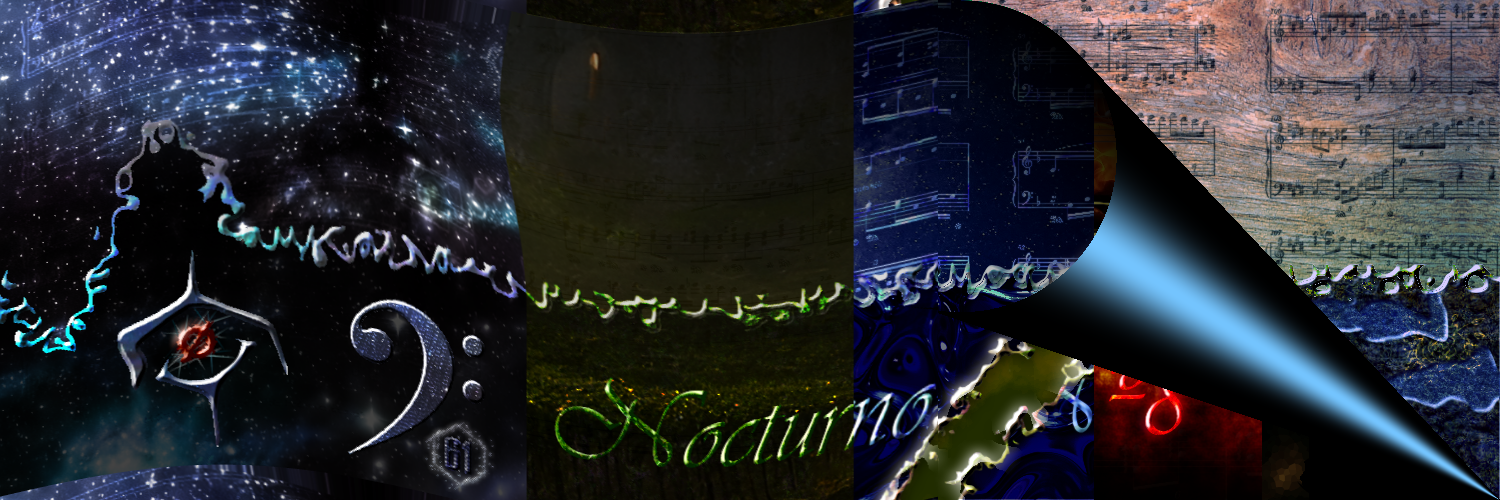
.thumb.png.8b5b433a341551e913a34392660bc95b.png)



.thumb.png.1e2763f479362bbb522da50d31ef2e50.png)


